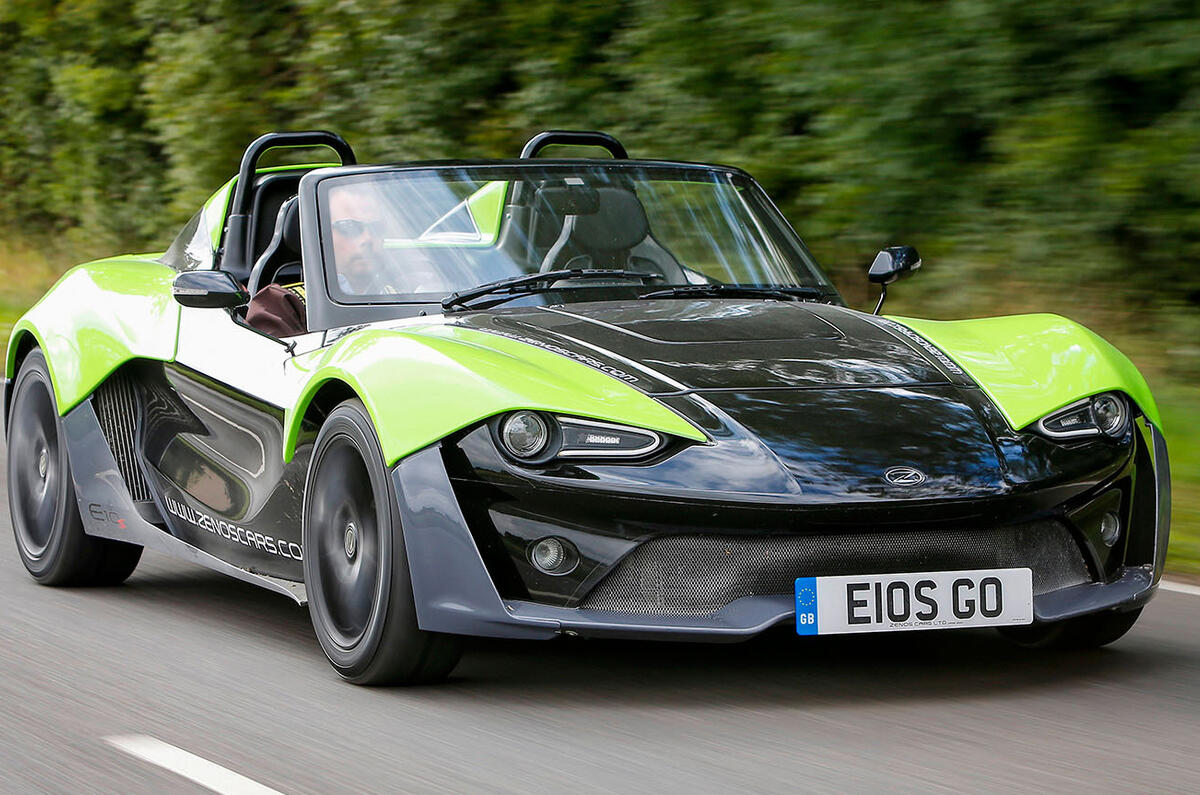Usability is a relative concept in a lightweight sports car. Most are designed for sufficient practicality for short-hop weekend use and track days only. And for most owners, that’s probably usable enough.
However, where a Caterham Seven offers a modest but useful boot, the E10 does not. It’s a minor shortcoming, perhaps. Even so, the E10 remains quite practical for its breed, with plenty of occupant space even for larger drivers, and – in as-tested specification at least – decent protection from the elements.
Our test car was a late-cycle prototype that was a couple of inches short on leg room compared with series-production cars, but even so it offered enough space for one 6ft 4in tester to get comfortable. The steering column is fixed but well placed and the pedal box generous, with large pedals positioned at a respectful enough distance from one another that you needn’t worry about fouling the wrong one accidentally.
The E10’s seats are necessarily quite hard, simple affairs, although they’re comfortable enough over longer trips. The car’s primary control ergonomics are good, with one exception: a shortage of space for the driver’s right elbow. Although taller drivers will be able to prop up their right arm on the side of the cockpit when touring, doing so only limits your leverage on the steering wheel as much as the slightly restrictive shape of the cockpit did before. Something as simple as a cut-out in the cockpit’s side moulding would easily solve the problem.




















































